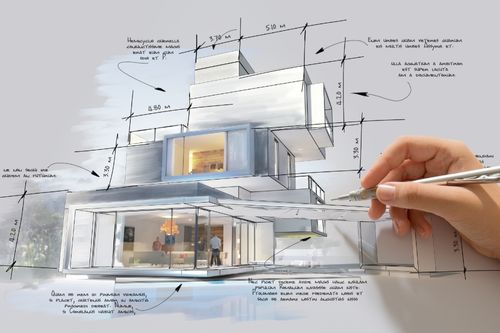How CDA Architects Deliver Cutting-Edge Solutions for Sustainable Architecture
How CDA Architects Deliver Cutting-Edge Solutions for Sustainable Architecture
Blog Article
The Important Function of a Designer fit Sustainable Urban Settings for Future Generations
The role of an engineer in crafting sustainable urban atmospheres is progressively pivotal in reacting to the difficulties of climate adjustment and urbanization. By flawlessly incorporating ecological principles into their layouts, engineers not just improve the aesthetic and functional quality of urban rooms however likewise address pressing problems such as power effectiveness and social equity.
Recognizing Sustainable Urban Layout
Sustainable metropolitan design incorporates ecological principles with metropolitan planning to develop atmospheres that are not just comfortable but likewise resistant. This approach highlights the relevance of integrating all-natural systems into the urban material, making sure that development meets the needs of the here and now without compromising the ability of future generations to satisfy their very own demands. Crucial element of lasting city style consist of efficient land usage, the promo of biodiversity, and the integration of eco-friendly rooms, all of which add to enhanced high quality of life for citizens.
In addition, lasting city layout prioritizes the reduction of the city warmth island effect, enhanced air high quality, and reliable stormwater monitoring. It encourages the use of eco-friendly sources and energy-efficient structure practices, which significantly lower carbon footprints. Lasting metropolitan style fosters social equity by developing obtainable public spaces and advertising mixed-use developments that cater to varied populations.
With thoughtful preparation and ingenious design approaches, sustainable metropolitan environments can enhance neighborhood resilience against environment change while fostering financial advancement. This holistic approach not just addresses immediate metropolitan difficulties but additionally lays the foundation for healthier, more sustainable cities for generations ahead.
Key Obligations of Architects
Engineers play an essential function fit lasting city environments by converting design principles right into tangible frameworks and spaces. Their responsibilities incorporate a wide variety of activities that add to the general success of urban layout jobs.
Primarily, architects perform extensive site evaluations to recognize the ecological, social, and social context of their projects. This foundational understanding notifies their design decisions, making certain that buildings harmonize with their surroundings. They likewise participate in collaborative processes with stakeholders, including city coordinators, designers, and the community, fostering a comprehensive strategy to city growth.
Furthermore, designers are charged with producing styles that enhance power effectiveness, source preservation, and performance. They must follow neighborhood zoning legislations, constructing codes, and sustainability qualifications, guaranteeing conformity while pushing the limits of innovation.

Cutting-edge Materials and Techniques
In the quest of environmentally responsible layout, cutting-edge products and methods have become important components in the production of sustainable urban environments. Architects are progressively utilizing products that lessen environmental influence while boosting energy effectiveness. For instance, recycled products, such as recovered timber and repurposed metals, not only lower waste yet likewise include special aesthetic top qualities to frameworks.
Furthermore, developments in innovation have actually resulted in the development of high-performance materials, such as insulated concrete types (ICFs) and photovoltaic or pv glass, which add to energy preservation and harness sustainable energy. Strategies such as easy solar design and environment-friendly roof coverings further exhibit how architecture can balance with all-natural systems, minimizing dependence on fabricated heating & cooling.
Furthermore, the assimilation of clever materials, which adapt to environmental modifications, provides appealing methods for boosting structure performance - cda architects. These materials can respond to temperature changes or wetness levels, enhancing comfort and sustainability
Eventually, the critical selection and application of innovative materials and methods empower engineers to create city areas that are not only practical and visually pleasing but additionally resistant and ecologically liable, making certain a lasting future for generations to find.
Neighborhood Engagement and Collaboration
The success of cutting-edge products and methods in sustainable city style is significantly enhanced by energetic area interaction and partnership. Designers should acknowledge that the built atmosphere exceptionally impacts the lives of neighborhood homeowners, making it vital to include them in the design process. Engaging the neighborhood promotes a sense of possession and accountability, ensuring that advancements not only satisfy visual and practical needs but additionally mirror the worths and ambitions of those who inhabit them.

Effective neighborhood interaction likewise helps in prioritizing social equity within urban advancement. By thinking about the voices of marginalized populaces, engineers can develop spaces that are inclusive and equitable. In this way, area engagement and partnership end up being indispensable to attaining absolutely lasting metropolitan atmospheres that offer the requirements of current and future generations.
Future Trends in Sustainable Architecture

Furthermore, advancements in technology are forming future trends in sustainable architecture. The assimilation of smart materials and structure systems permits real-time energy monitoring, improving performance and reducing carbon footprints. Developments such as green roof coverings, living wall surfaces, and energy-generating facades are becoming basic methods, additionally promoting environmental balance within metropolitan settings.
Furthermore, a change in the direction of biophilic design is getting grip, emphasizing the connection in between nature and human well-being. By integrating natural environments, designers develop why not try these out rooms that foster psychological health while advertising biodiversity.
Final Thought
In verdict, architects are essential in advancing sustainable city atmospheres via their competence in style, innovative materials, and community engagement. By prioritizing energy effectiveness and source preservation, these specialists add to the production of resilient urban spaces try here that meet the needs of present and future generations - cda architects. The integration of ecological principles not only enhances livability but also fosters social equity, making sure advancements reverberate with the worths and aspirations of the neighborhoods they offer
Report this page